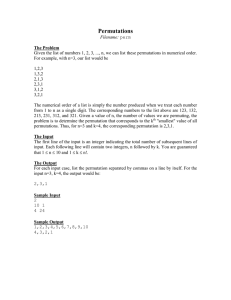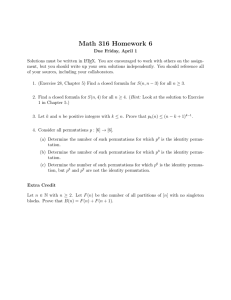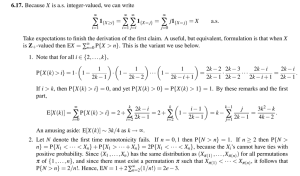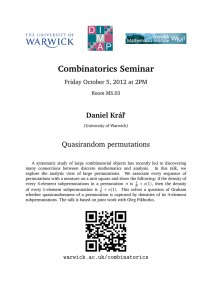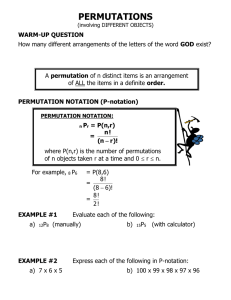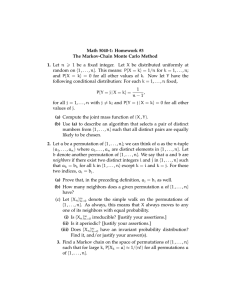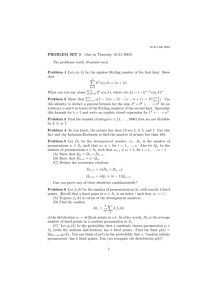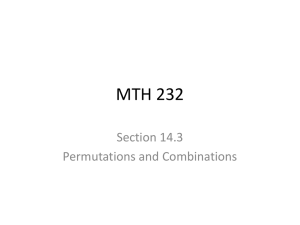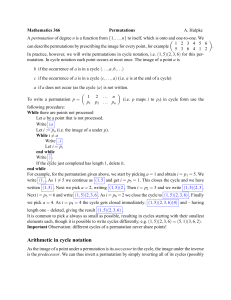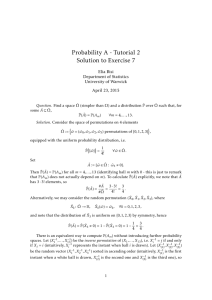Mathematics 676-3 Homework (due Sep 6) 6) A. Hulpke
advertisement
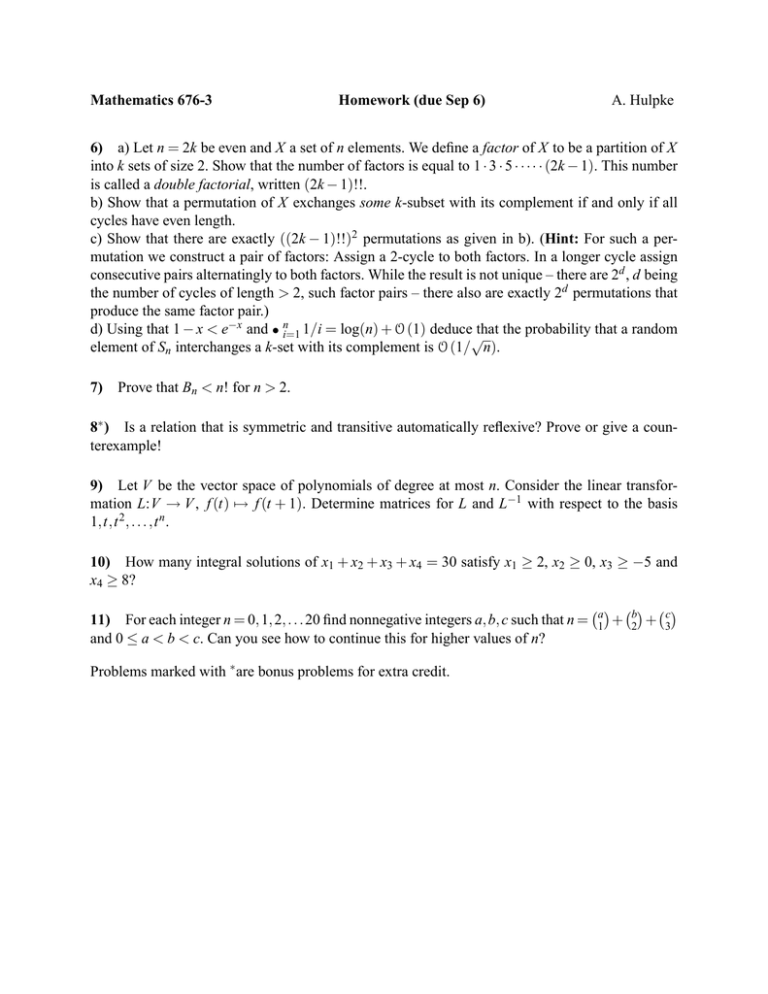
Mathematics 676-3 Homework (due Sep 6) A. Hulpke 6) a) Let n = 2k be even and X a set of n elements. We define a factor of X to be a partition of X into k sets of size 2. Show that the number of factors is equal to 1 · 3 · 5 · · · · · (2k − 1). This number is called a double factorial, written (2k − 1)!!. b) Show that a permutation of X exchanges some k-subset with its complement if and only if all cycles have even length. c) Show that there are exactly ((2k − 1)!!)2 permutations as given in b). (Hint: For such a permutation we construct a pair of factors: Assign a 2-cycle to both factors. In a longer cycle assign consecutive pairs alternatingly to both factors. While the result is not unique – there are 2d , d being the number of cycles of length > 2, such factor pairs – there also are exactly 2d permutations that produce the same factor pair.) d) Using that 1 − x < e−x and ∑ni=1 1/i = log(n) + O (1) deduce√that the probability that a random element of Sn interchanges a k-set with its complement is O (1/ n). 7) Prove that Bn < n! for n > 2. 8∗ ) Is a relation that is symmetric and transitive automatically reflexive? Prove or give a counterexample! 9) Let V be the vector space of polynomials of degree at most n. Consider the linear transformation L:V → V , f (t) 7→ f (t + 1). Determine matrices for L and L−1 with respect to the basis 1,t,t 2 , . . . ,t n . 10) How many integral solutions of x1 + x2 + x3 + x4 = 30 satisfy x1 ≥ 2, x2 ≥ 0, x3 ≥ −5 and x4 ≥ 8? 11) For each integer n = 0, 1, 2, . . . 20 find nonnegative integers a, b, c such that n = and 0 ≤ a < b < c. Can you see how to continue this for higher values of n? Problems marked with ∗ are bonus problems for extra credit. a b c 1 + 2 + 3
